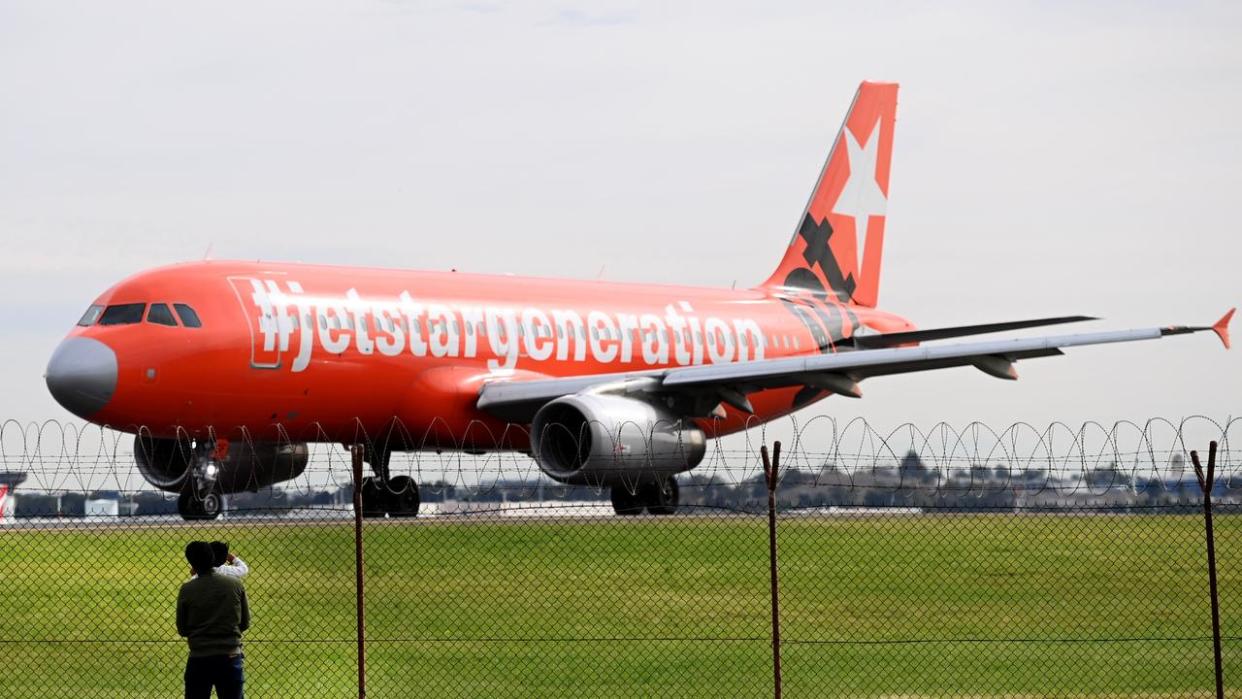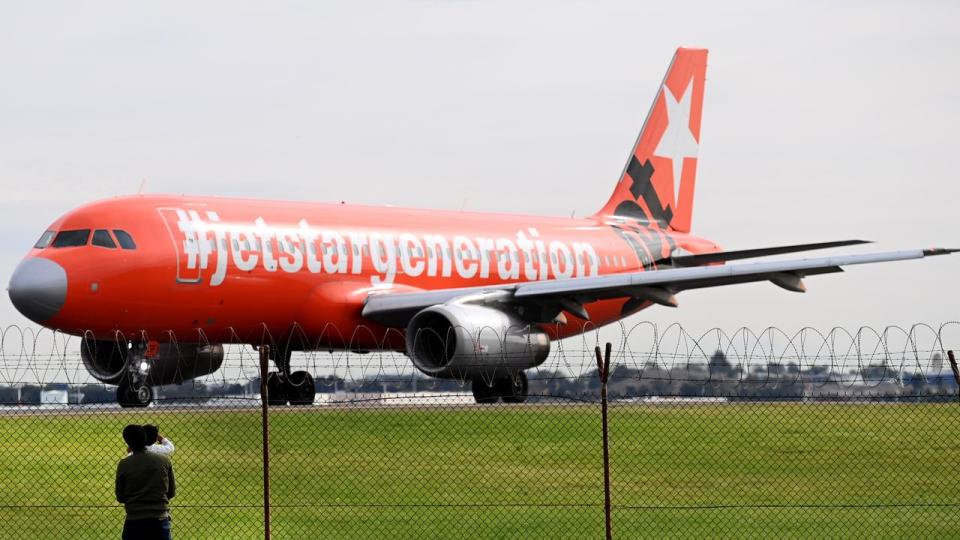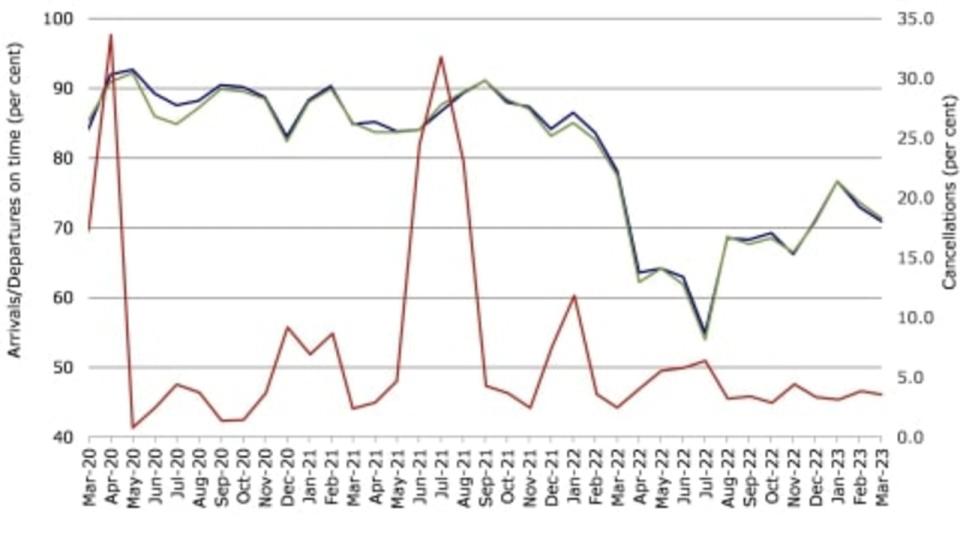Australia’s most cancelled flight revealed

Nearly one in 10 flights from Melbourne to Sydney were cancelled in March as Australia’s airline industry continues its sluggish recovery from the pandemic, new figures have revealed.
The damning findings from the Bureau of Infrastructure and Transport Research Economics (BITRE) have also found Jetstar to be the least reliable carrier, with 7.1 per cent of its services cancelled.
That was followed by Virgin Australia Regional Airlines at 5.6 per cent and Qantas at 3.6 per cent.
In their monthly aviation performance statistics, the BITRE found the Melbourne-Sydney route had the highest number of cancellations in March, with a total of 414 cancelled flights between both cities.
“This month’s on time arrivals figure was significantly lower than the long term average performance for all routes (81.5 per cent),” the report states.
“The on time departures figure was also significantly lower than the long term average (82.7 per cent).
“The rate of cancellations (2.5 per cent) was higher than the long term average of 2.1 per cent.”
Bad weather and persistent headaches with supply chain issues, including staffing availabilities, have all been blamed for problems with route cancellations.
Qantas has announced plans to hire another 30,000 frontline staff over the next 10 years – part of their efforts to bounce back from a difficult few years from Covid-19.
Jetstar is taking similar steps, as they look to hire more staff and invest in new aircraft.
“We know there’s more to be done to improve our punctuality,” said a Jetstar spokesperson, “and we continue to invest in new aircraft, recruit more staff in customer service, engineering and operational roles and upgrade our systems and processes to provide a more consistently reliable schedule.”

The report found Canberra remained the most reliable airport, with the report finding 76.2 per cent of flights over March departed on time.
This was followed by Darwin, with 72.9 per cent of flights leaving on time, and Brisbane at 72.9 per cent.
But only 66.5 per cent of flights were taking off on time at Hobart, followed by Sydney (69.4 per cent) and Perth (69.8 per cent).
BITRE defines flights as being on time if they arrive or depart within 15 minutes after the time shown in the carrier’s schedule.
Sydney Airport in particular struggles with its own challenges brought about by the slot system, and the 80-20 rule.
The two schemes, which have been criticised by Australia’s competition watchdog, dictate how many flight times, or slots, can be allocated every hour.
An airline can effectively hold a slot indefinitely as long as it uses the service 80 per cent of the time; carries have been known to cancel less popular flights in order to bump those passengers onto flights operating under more sought-after slots in order to hang onto them.
The Federal Government’s Harris Review, which looked at Sydney Airport’s demand management, is set to inform reworking of legislation due to sunset in April 2024.

Last Thursday, Sydney Airport reported a total of 3,166,000 passengers passing through over March.
That marked an 86.7 per cent increase on figures from March 2019 – something Sydney Airport chief Geoff Culbert said indicated a strong post-Covid recovery from travellers.
“For the first time since the Australian border reopened to tourists, international passenger numbers have cracked the 80 per cent recovery mark, with many airlines increasing capacity,” he said.
“With China now open for business, and the European and North American summer almost here, we anticipate our international traffic will continue to pick up in the coming months.”


